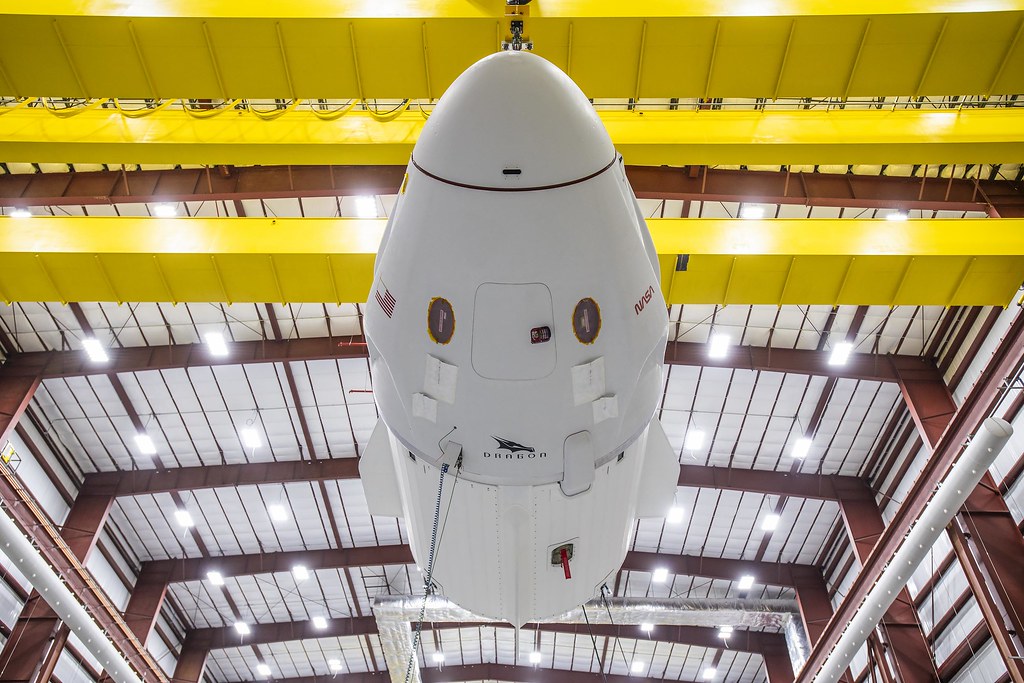#Launch Complex 39A
Text
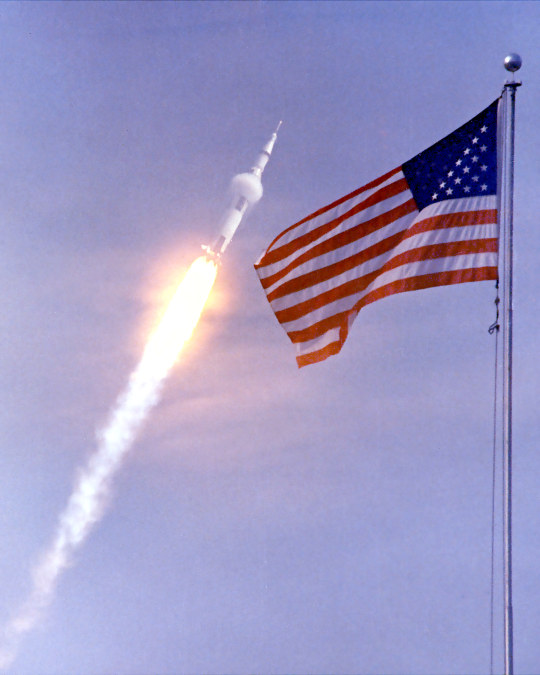
Apollo 11 Launch - 16 July 1969
#NASA#Apollo 11#Saturn V#Rocket#Kennedy Space Center#Launch Complex 39A#Spaceflight#American Flag#Space race#Moon landing#spacecraft#Moon mission
214 notes
·
View notes
Video
KSC-20240223-PH-SPX01_0002 by NASA Kennedy
Via Flickr:
SpaceX’s Dragon spacecraft for NASA’s SpaceX Crew-8 mission is mated to the company's Falcon 9 rocket at SpaceX’s hangar at Kennedy Space Center’s Launch Complex 39A in Florida on Friday, Feb. 23, 2024, at Cape Canaveral Space Force Station. NASA astronauts Matthew Dominick, Michael Barratt, and Jeanette Epps, and Roscosmos cosmonaut Alexander Grebenkin are slated to launch to the International Space Station no earlier than 12:04 a.m. EST on March 1, 2024. Photo credit: SpaceX NASA image use policy.
#CCP#Commercial Crew Program#Crew-8#Falcon 9#SpaceX#Crew Dragon#Dragon Mate#LC-39A#Launch Complex 39A#Pad 39A#Matthew Dominick#Michael Barratt#Jeanette Epps#Alexander Grebenkin#KSC#flickr
0 notes
Video
KSC-20230223-PH-KLS01_0212 by NASA Kennedy
Via Flickr:
Andrey Fedyaev, Roscosmos cosmonaut and mission specialist for Crew-6, checks his SpaceX spacesuit inside the crew suit-up room in the Neil Armstrong Operations and Checkout Building at NASA’s Kennedy Space Center in Florida during a countdown dress rehearsal on Feb. 23, 2023, to prepare for the upcoming Crew-6 launch. Fedyaev, along with NASA astronaut Stephen Bowen, spacecraft commander; NASA astronaut Warren “Woody” Hoburg, pilot; and Sultan Alneyadi, UAE (United Arab Emirates) astronaut and mission specialist will launch to the International Space Station aboard the Crew Dragon Endeavour on a SpaceX Falcon 9. Launch is targeted for 1:45 a.m. EST on Feb. 27 from Launch Complex 39A. Crew-6 is the sixth crew rotation mission with SpaceX to the station, and the seventh flight of Dragon with people as part of the agency’s Commercial Crew Program. Photo credit: NASA/Kim Shiflett NASA image use policy.
#Andrey Fedyaev#Associate Administrator#Astronauts#Bill Nelson#Bob Cabana#CCP#Commercial Crew Program#Cosmonaut#Crew-6#Endeavour#ISS#International Space Station#JSC#Janet Petro#Johnson Space Center#KSC#KSC Center Director#Kennedy Space Center#LC-39A#Launch Complex 39A#MBRSC#Mohammed bin Rashid Space Center#NASA#NASA Administrator#NASA Astronauts#National Aeronautical and Space Administration#Roscosmos#SpaceX#SpaceX Crew Dragon Spacecraft#SpaceX Crew-6
0 notes
Text
Crew-7 mission launches to the International Space Station
Crew-7 launches atop a Falcon 9 rocket to begin a 30-hour trek to the International Space Station. Credit: SpaceX
SpaceX launched the multinational Crew-7 Dragon mission carrying three astronauts and one cosmonaut bound for a six-month stay aboard the International Space Station.
Continue reading Untitled

View On WordPress
#Crew Dragon#Crew-7#ESA#Falcon 9#JAXA#Kennedy Space Center#Launch Complex 39A#Lead Stories#NASA#Roscosmos#SpaceX
0 notes
Text
💯 real video of the @SpaceX Inspiration4 launch is made of multiple telescope tracking shots, created by the talented MARS Scientific group — perfectly showcasing what a #Falcon9 rocket launch looks like after sunset.
—
The flight, dubbed "Inspiration4," was a privately chartered spaceflight by billionaire Jared Isaacman, which launched on 15 September 2021.
It became the first crewed orbital mission with no professional astronauts on board.
Aboard the SpaceX Crew Dragon capsule dubbed Resilience, Isaacman — a self-described space geek who has accrued more than 6,000 hours piloting various aircraft — was the commander of the flight.
Joining him were physician assistant Hayley Arcenaux, data engineer Chris Sembroski, and geoscientist and science communication specialist Sian Proctor.
Resilience and its four occupants circled Earth for three days, splashing down off the Florida coast on September 18.
The primary purposes of Inspiration4, according to the mission's official website, were to raise awareness and funds for St. Jude Children's Research Hospital in Memphis, Tennessee, and to begin "a new era for human spaceflight and exploration."
https://www.space.com/inspiration4-spacex.html#section-how-was-the-crew-chosen-for-inspiration4
#Space X#Falcon 9#space#space rocket#Inspiration4#space launch#Mars Scientific#Jared Isaacman#Shift4 Payments#Elon Musk#space company#SpaceX Crew Dragon capsule#Resilience#spaceflight#space exploration#Earth#Kennedy Space Center#Launch Complex 39A#Inspirati④n#Space Exploration Technologies Corp#Florida#human spaceflight#Mobile Aerospace Reconnaissance System#long-range telescopic tracking#spacecraft imaging
1 note
·
View note
Text

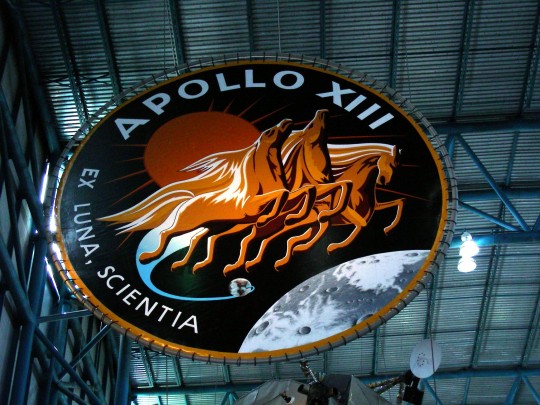

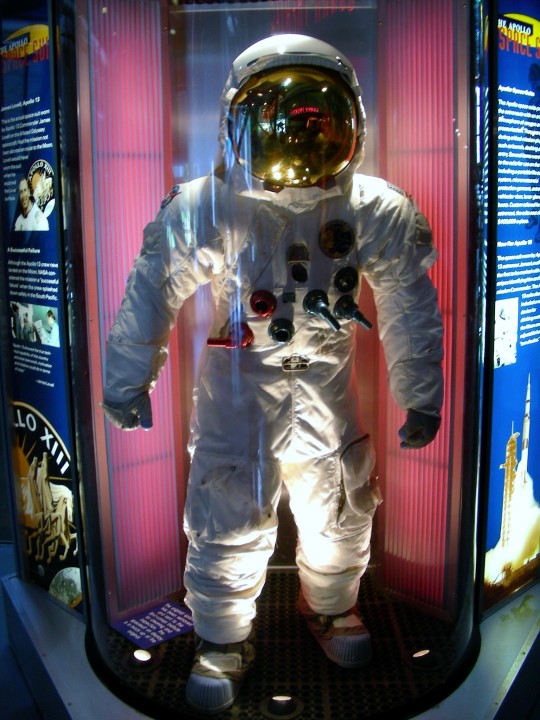
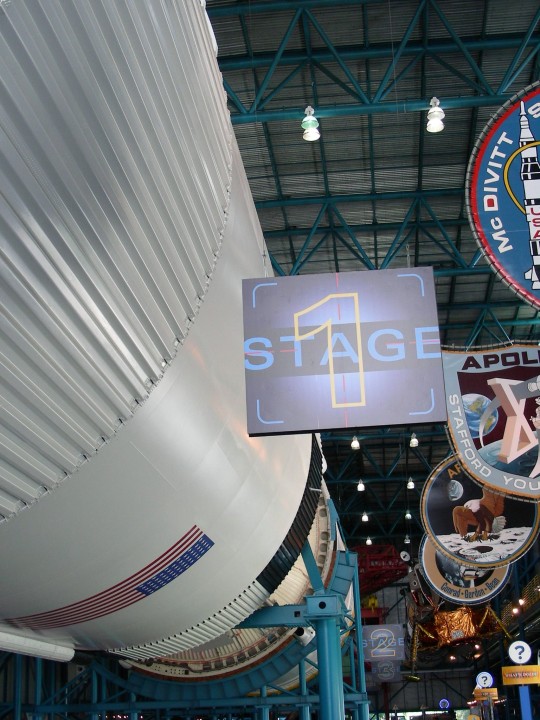

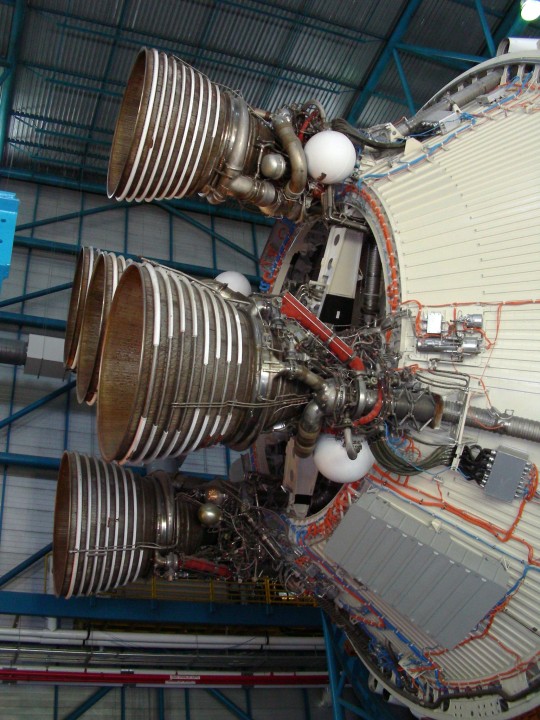



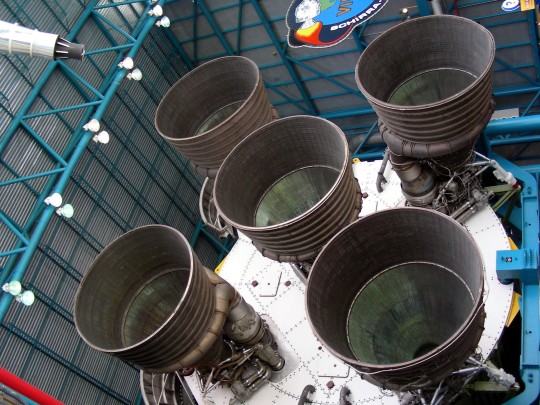



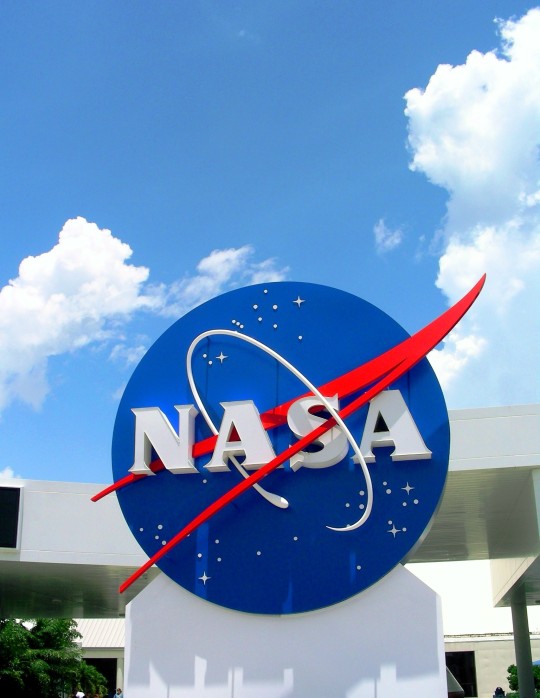
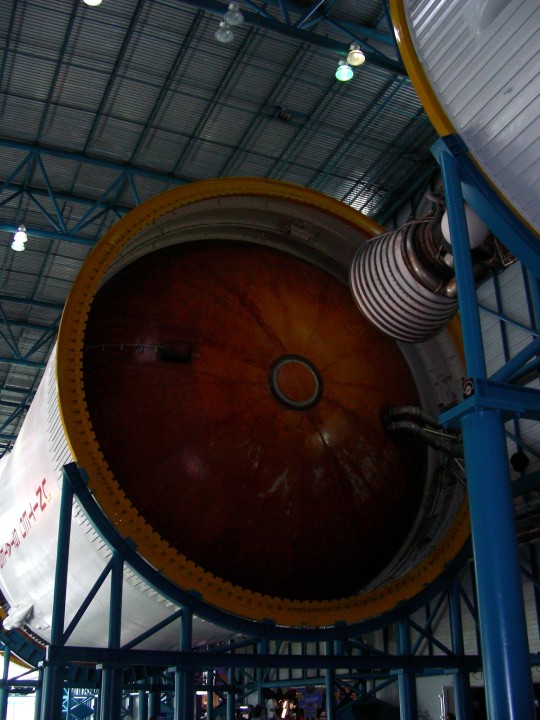


Apollo 13 was launched on April 11, 1970.
#Apollo 13#launched#11 April 1970#anniversary#US history#Florida#USA#Kennedy Space Center#John F. Kennedy Space Center#KSC#NASA#National Aeronautics and Space Administration#Launch Complex 39A (LC-39)#Kennedy Space Center Visitor Complex#Saturn V#engineering#logo#2009#original photography#summer 2010#travel#vacation#tourist attraction#indoors#outdoors#landmark#Jim Lovell's space suit
23 notes
·
View notes
Text

9 Out-of-This-World Moments for Space Communications & Navigation in 2023
How do astronauts and spacecraft communicate with Earth?
By using relay satellites and giant antennas around the globe! These tools are crucial to NASA’s space communications networks: the Near Space Network and the Deep Space Network, which bring back science and exploration data every day.
It’s been a great year for our space communications and navigation community, who work to maintain the networks and enhance NASA’s capabilities. Keep scrolling to learn more about our top nine moments.

The SpaceX Falcon 9 rocket carrying the Dragon spacecraft lifts off from Launch Complex 39A at NASA's Kennedy Space Center in Florida on Thursday, Nov. 9, 2023, on the company's 29th commercial resupply services mission for the agency to the International Space Station. Liftoff was at 8:28 p.m. EST.
1. In November, we launched a laser communications payload, known as ILLUMA-T, to the International Space Station. Now, ILLUMA-T and the Laser Communications Relay Demonstration (LCRD) are exchanging data and officially complete NASA’s first two-way, end-to-end laser relay system. Laser communications can send more data at once than traditional radio wave systems – think upgrading from dial-up to fiber optic internet. ILLUMA-T and LCRD are chatting at 1.2 gigabits per second (Gbps). At that rate, you could download an average movie in under a minute.
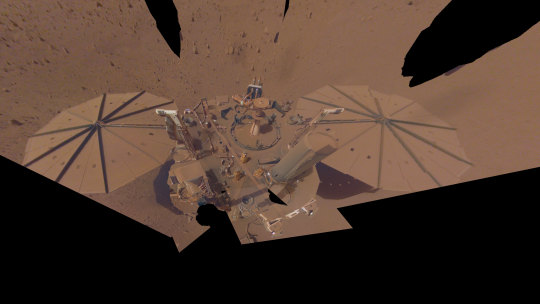
NASA’s InSight lander captured this selfie on Mars on April 24, 2022, the 1,211th Martian day, or sol, of the mission.
2. Data analyzed in 2023 from NASA’s retired InSight Mars lander provided new details about how fast the Red Planet rotates and how much it wobbles. Scientists leveraged InSight’s advanced radio technology, upgrades to the Deep Space Network, and radio signals to determine that Mars’ spin rate is increasing, while making the most precise measurements ever of Mars’ rotation.
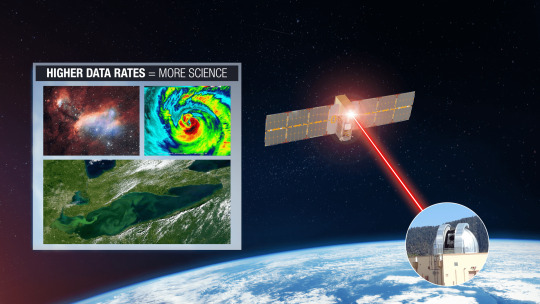
TBIRD is demonstrating a direct-to-Earth laser communications link from low Earth orbit to a ground station on Earth.
3. We set a new high record! The TeraByte InfraRed Delivery (TBIRD) payload – also demonstrating laser communications like ILLUMA-T and LCRD – downlinked 4.8 terabytes of data at 200 Gbps in a single 5-minute pass. This is the highest data rate ever achieved by laser communications technology. To put it in perspective a single terabyte is the equivalent of about 500 hours of high-definition video.
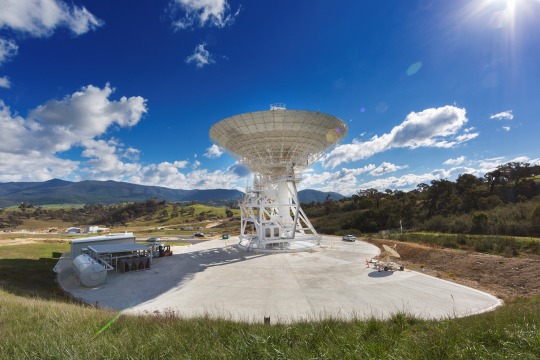
A 34-meter (112-foot) wide antenna at Canberra Deep Space Communications Complex near Canberra, Australia.
4. This year we celebrated the Deep Space Network’s 60th anniversary. This international array of antennas located at three complexes in California, Spain, and Australia allow us to communicate with spacecraft at the Moon and beyond. Learn more about the Deep Space Network’s legacy and future advancements.
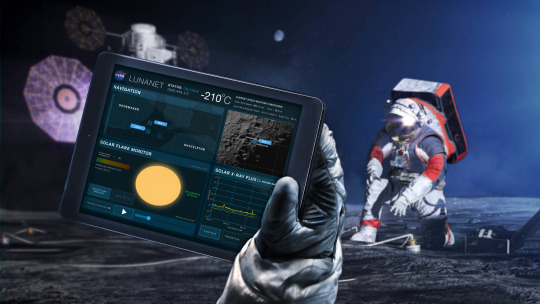
An illustration of the LunaNet architecture. LunaNet will bring internet-like services to the Moon.
5. We are bringing humans to the Moon with Artemis missions. During expeditions, astronauts exploring the surface are going to need internet-like capabilities to talk to mission control, understand their routes, and ensure overall safety. The space comm and nav group is working with international partners and commercial companies to develop LunaNet, and in 2023, the team released Draft LunaNet Specification Version 5, furthering development.
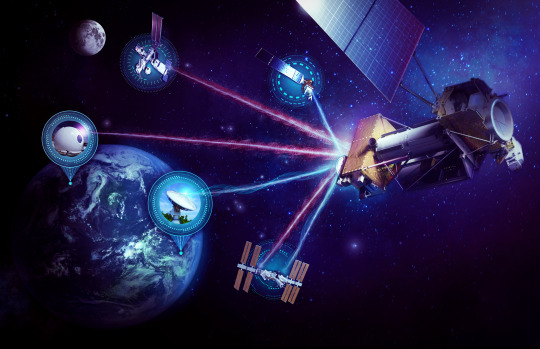
The High-Rate Delay Tolerant Networking node launched to the International Space Station in November and will act as a high-speed path for data.
6. In addition to laser communications, ILLUMA-T on the International Space Station is also demonstrating high-rate delay/disruption tolerant networking (HDTN). The networking node is showcasing a high-speed data path and a store-and-forward technique. HDTN ensures data reaches its final destination and isn’t lost on its path due to a disruption or delay, which are frequent in the space environment.

The Communications Services Project (CSP) partners with commercial industry to provide networking options for future spaceflight missions.
7. The space comm and nav team is embracing the growing aerospace industry by partnering with commercial companies to provide multiple networking options for science and exploration missions. Throughout 2023, our commercialization groups engaged with over 110 companies through events, one-on-one meetings, forums, conferences, and more. Over the next decade, NASA plans to transition near-Earth services from government assets to commercial infrastructure.

Middle and high school students solve a coding experiment during NASA's Office of STEM Engagement App Development Challenge.
8. Every year, NASA’s Office of STEM Engagement sponsors the App Development Challenge, wherein middle and high school students must solve a coding challenge. This year, student groups coded an application to visualize the Moon’s South Pole region and display information for navigating the Moon’s surface. Our space communications and navigation experts judged and interviewed students about their projects and the top teams visited NASA’s Johnson Space Center in Houston!
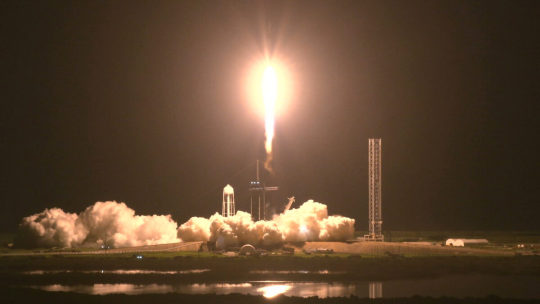
A SpaceX Falcon 9 rocket soars upward after liftoff at the pad at 3:27 a.m. EDT on Saturday, Aug. 26, from Kennedy Space Center’s Launch Complex 39A in Florida carrying NASA’s SpaceX Crew-7 crew members to the International Space Station. Aboard SpaceX’s Dragon spacecraft are NASA astronaut Jasmin Moghbeli, ESA (European Space Agency) astronaut Andreas Mogensen, JAXA (Japan Aerospace Exploration Agency) astronaut Satoshi Furukawa, and Roscosmos cosmonaut Konstantin Borisov.
9. The Near Space Network supported 19 launches in 2023! Launches included Commercial Crew flights to the International Space Station, science mission launches like XRISM and the SuperBIT balloon, and many more. Once in orbit, these satellites use Near Space Network antennas and relays to send their critical data to Earth. In 2023, the Near Space Network provided over 10 million minutes of communications support to missions in space.
Here’s to another year connecting Earth and space.
Make sure to follow us on Tumblr for your regular dose of space!
1K notes
·
View notes
Text
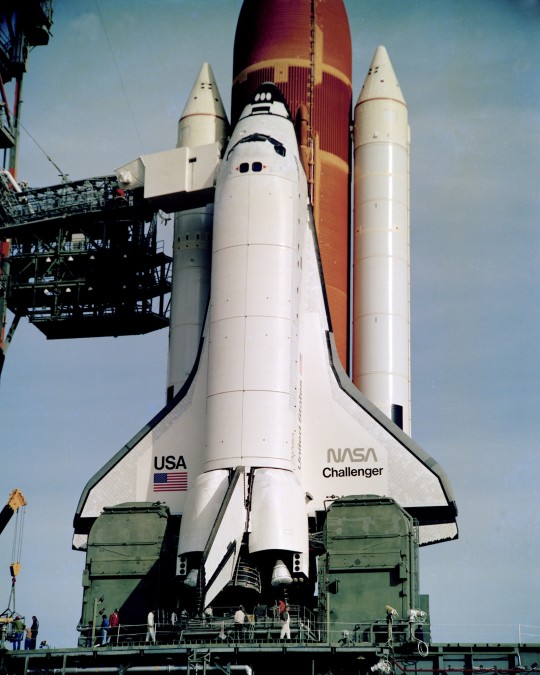
"Space Shuttle Challenger waits on Launch Complex 39A at Kennedy Space Center before its first mission, STS-6, launched on April 4, 1983. Originally built as a test vehicle, in 1979 NASA issued a contract to convert it to a fully space-rated orbiter. It became the second operational Shuttle, delivered to Kennedy Space Center in July 1982. Challenger was destroyed shortly after lift off on her 10th mission, STS-51L, on January 28, 1986."
Date: January 26, 1983
NASA ID: KSC-83PC-0028
#STS-6#Space Shuttle#Space Shuttle Challenger#Challenger#OV-099#Orbiter#NASA#Space Shuttle Program#January#1983#LC-39A#Kennedy Space Center#Florida#my post
89 notes
·
View notes
Text

NASA Artemis science, first intuitive machines flight head to moon
A suite of NASA science instruments and technology demonstrations is on the way to our nearest celestial neighbor for the benefit of humanity. Through this flight to the moon, they will provide insights into the lunar surface environment and test technologies for future landers and Artemis astronauts.
At 1:05 a.m. EST on Thursday, Intuitive Machines' Nova-C lander launched on a SpaceX Falcon 9 rocket from Launch Complex 39A at the agency's Kennedy Space Center in Florida. At approximately 1:53 a.m., the lander deployed from the Falcon 9 second stage. Teams confirmed it made communications contact with the company's mission operations center in Houston. The spacecraft is stable and receiving solar power.
These deliveries are part of NASA's CLPS (Commercial Lunar Payload Services) initiative and Artemis campaign, which includes new solar system science to better understand planetary processes and evolution, search for evidence of water and other resources, and support long-term human exploration.
"NASA scientific instruments are on their way to the moon—a giant leap for humanity as we prepare to return to the lunar surface for the first time in more than half a century," said NASA Administrator Bill Nelson. "These daring moon deliveries will not only conduct new science at the moon, but they are supporting a growing commercial space economy while showing the strength of American technology and innovation. We have so much to learn through CLPS flights that will help us shape the future of human exploration for the Artemis Generation."
While enroute to the moon, NASA instruments will measure the quantity of cryogenic engine fuel as it is used, and during descent toward the lunar surface, they will collect data on plume-surface interactions and test precision landing technologies.
Once on the moon, NASA instruments will focus on investigating space weather/lunar surface interactions and radio astronomy. The Nova-C lander also will carry retroreflectors contributing to a network of location markers on the moon for communication and navigation for future autonomous navigation technologies.
NASA science aboard the lander includes:
Lunar Node 1 Navigation Demonstrator: A small, CubeSat-sized experiment that will demonstrate autonomous navigation that could be used by future landers, surface infrastructure, and astronauts, digitally confirming their positions on the moon relative to other spacecraft, ground stations, or rovers on the move.
Laser Retroreflector Array: A collection of eight retroreflectors that enable precision laser ranging, which is a measurement of the distance between the orbiting or landing spacecraft to the reflector on the lander. The array is a passive optical instrument and will function as a permanent location marker on the moon for decades to come.
Navigation Doppler Lidar for Precise Velocity and Range Sensing: A Lidar-based (Light Detection and Ranging) guidance system for descent and landing. This instrument operates on the same principles of radar but uses pulses from a laser emitted through three optical telescopes. It will measure speed, direction, and altitude with high precision during descent and touchdown.
Radio Frequency Mass Gauge: A technology demonstration that measures the amount of propellant in spacecraft tanks in a low-gravity space environment. Using sensor technology, the gauge will measure the amount of cryogenic propellant in Nova-C's fuel and oxidizer tanks, providing data that could help predict fuel usage on future missions.
Radio-wave Observations at the Lunar Surface of the Photoelectron Sheath: The instrument will observe the moon's surface environment in radio frequencies, to determine how natural and human-generated activity near the surface interacts with and could interfere with science conducted there.
Stereo Cameras for Lunar Plume-Surface Studies: A suite of four tiny cameras to capture imagery showing how the moon's surface changes from interactions with the spacecraft's engine plume during and after descent.
Intuitive Machines' Nova-C-class lunar lander, named Odysseus, is scheduled to land on the moon's South Pole region near the lunar feature known as Malapert A on Thursday, Feb. 22. This relatively flat and safe region is within the otherwise heavily cratered southern highlands on the side of the moon visible from Earth. Landing near Malapert A will also help mission planners understand how to communicate and send data back to Earth from a location where Earth is low on the lunar horizon.
The NASA science aboard will spend approximately seven days gathering valuable scientific data about Earth's nearest neighbor, helping pave the way for the first woman and first person of color to explore the moon under Artemis.
IMAGE....A SpaceX Falcon 9 rocket carrying Intuitive Machines’ Nova-C lunar lander lifts off from Launch Pad 39A at NASA’s Kennedy Space Center in Florida at 1:05 a.m. EST on Feb. 15, 2024. As part of NASA’s CLPS (Commercial Lunar Payload Services) initiative and Artemis campaign, Intuitive Machines’ first lunar mission will carry NASA science and commercial payloads to the moon to study plume-surface interactions, space weather/lunar surface interactions, radio astronomy, precision landing technologies, and a communication and navigation node for future autonomous navigation technologies. Credit: NASA
11 notes
·
View notes
Text

A SpaceX Falcon 9 Rocket and Dragon Spacecraft
at Kennedy Space Center's Launch Complex 39A
in preparation for the 27th Commercial Resupply Services launch
to the International Space Station
image credit: SpaceX
7 notes
·
View notes
Link
A SpaceX Falcon 9 rocket carrying Intuitive Machines’ Nova-C lunar lander lifts off from Launch Pad 39A at NASA’s Kennedy Space Center in Florida at 1:05 a.m. EST on Feb. 15, 2024. As part of NASA’s CLPS (Commercial Lunar Payload Services) initiative and Artemis campaign, Intuitive Machines’ first lunar mission will carry NASA science and commercial payloads to the Moon to study plume-surface interactions, space weather/lunar surface interactions, radio astronomy, precision landing technologies, and a communication and navigation node for future autonomous navigation technologies. A suite of NASA science instruments and technology demonstrations is on the way to our nearest celestial neighbor for the benefit of humanity. Through this flight to the Moon, they will provide insights into the lunar surface environment and test technologies for future landers and Artemis astronauts. At 1:05 a.m. EST on Thursday, Intuitive Machines’ Nova-C lander launched on a SpaceX Falcon 9 rocket from Launch Complex 39A at the agency’s Kennedy Space Center in Florida. At approximately 1:53 a.m., the lander deployed from the Falcon 9 second stage. Teams confirmed it made communications contact with the company’s mission operations center in Houston. The spacecraft is stable and receiving solar power. These deliveries are part of NASA’s CLPS (Commercial Lunar Payload Services) initiative and Artemis campaign, which includes new solar system science to better understand planetary processes and evolution, search for evidence of water and other resources, and support long-term human exploration. “NASA scientific instruments are on their way to the Moon – a giant leap for humanity as we prepare to return to the lunar surface for the first time in more than half a century,” said NASA Administrator Bill Nelson. “These daring Moon deliveries will not only conduct new science at the Moon, but they are supporting a growing commercial space economy while showing the strength of American technology and innovation. We have so much to learn through CLPS flights that will help us shape the future of human exploration for the Artemis Generation.” While enroute to the Moon, NASA instruments will measure the quantity of cryogenic engine fuel as it is used, and during descent toward the lunar surface, they will collect data on plume-surface interactions and test precision landing technologies. Once on the Moon, NASA instruments will focus on investigating space weather/lunar surface interactions and radio astronomy. The Nova-C lander also will carry retroreflectors contributing to a network of location markers on the Moon for communication and navigation for future autonomous navigation technologies. NASA science aboard the lander includes: Lunar Node 1 Navigation Demonstrator: A small, CubeSat-sized experiment that will demonstrate autonomous navigation that could be used by future landers, surface infrastructure, and astronauts, digitally confirming their positions on the Moon relative to other spacecraft, ground stations, or rovers on the move. Laser Retroreflector Array: A collection of eight retroreflectors that enable precision laser ranging, which is a measurement of the distance between the orbiting or landing spacecraft to the reflector on the lander. The array is a passive optical instrument and will function as a permanent location marker on the Moon for decades to come. Navigation Doppler Lidar for Precise Velocity and Range Sensing: A Lidar-based (Light Detection and Ranging) guidance system for descent and landing. This instrument operates on the same principles of radar but uses pulses from a laser emitted through three optical telescopes. It will measure speed, direction, and altitude with high precision during descent and touchdown. Radio Frequency Mass Gauge: A technology demonstration that measures the amount of propellant in spacecraft tanks in a low-gravity space environment. Using sensor technology, the gauge will measure the amount of cryogenic propellant in Nova-C’s fuel and oxidizer tanks, providing data that could help predict fuel usage on future missions. Radio-wave Observations at the Lunar Surface of the Photoelectron Sheath: The instrument will observe the Moon’s surface environment in radio frequencies, to determine how natural and human-generated activity near the surface interacts with and could interfere with science conducted there. Stereo Cameras for Lunar Plume-Surface Studies: A suite of four tiny cameras to capture imagery showing how the Moon’s surface changes from interactions with the spacecraft’s engine plume during and after descent. Intuitive Machines’ Nova-C-class lunar lander, named Odysseus, is scheduled to land on the Moon’s South Pole region near the lunar feature known as Malapert A on Thursday, Feb. 22. This relatively flat and safe region is within the otherwise heavily cratered southern highlands on the side of the Moon visible from Earth. Landing near Malapert A will also help mission planners understand how to communicate and send data back to Earth from a location where Earth is low on the lunar horizon. The NASA science aboard will spend approximately seven days gathering valuable scientific data about Earth’s nearest neighbor, helping pave the way for the first woman and first person of color to explore the Moon under Artemis. Learn more about NASA’s CLPS initiative at: https://www.nasa.gov/clps -end- Karen Fox / Alise FisherHeadquarters, Washington202-358-1600 / [email protected] / [email protected] Nilufar RamjiJohnson Space Center, [email protected] Antonia JaramilloKennedy Space Center, [email protected] Share Details Last Updated Feb 15, 2024 LocationNASA Headquarters Related TermsMissionsArtemisCommercial Lunar Payload Services (CLPS)
3 notes
·
View notes
Text
NASAs SpaceX Crew-8 Launches to International Space Station
An international crew of four reached orbit following a successful launch to the International Space Station at 10:53 p.m. EST Sunday from Launch Complex 39A at NASA’s Kennedy Space Center in Florida. NASA’s SpaceX Crew-8 mission is the agency’s eighth commercial crew rotation mission with the company to the space station. A SpaceX Falcon 9 […]
from NASA https://ift.tt/MtwEDVL
2 notes
·
View notes
Text
"SpaceX CRS-27 Liftoff
Creating a golden streak in the night sky, a SpaceX Falcon 9 rocket soars upward after liftoff from Launch Complex 39A at NASA’s Kennedy Space Center in Florida on March 14, 2023, on the company’s 27th Commercial Resupply Services mission for the agency to the International Space Station. Liftoff was at 8:30 p.m. EDT. The Dragon spacecraft will deliver more than 6,000 pounds of science and research, supplies, and equipment to the crew aboard the space station, including the final two experiments comprising the National Institutes for Health and International Space Station National Laboratory’s Tissue Chips in Space initiative, Cardinal Heart 2.0 and Engineered Heart Tissues-2. The spacecraft is expected to spend about a month attached to the orbiting outpost before it returns to Earth with research and return cargo, splashing down off the coast of Florida."
Date: March 14, 2023

NASA ID: KSC-20230314-PH-SPX02_0002
14 notes
·
View notes
Text
Falcon Heavy orbits classified USSF-67 Space Force payload
Falcon Heavy orbits classified USSF-67 Space Force payload
A Falcon Heavy launches from Kennedy Space Center’s Launch Complex 39A to send the USSF-67 mission into space. Credit: Theresa Cross / Spaceflight Insider
A classified payload for the United States Space Force, USSF-67, was lofted into orbit by a SpaceX Falcon Heavy rocket just after sunset in Florida.
Continue reading Untitled
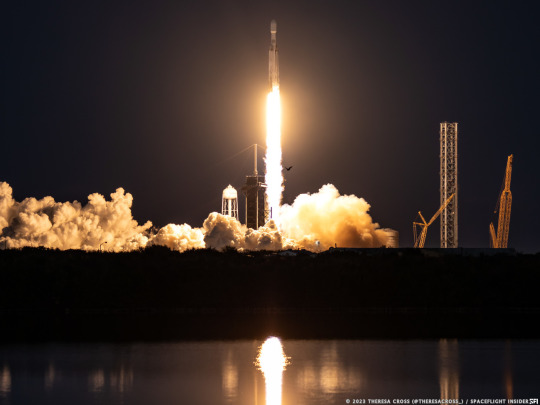
View On WordPress
0 notes
Photo
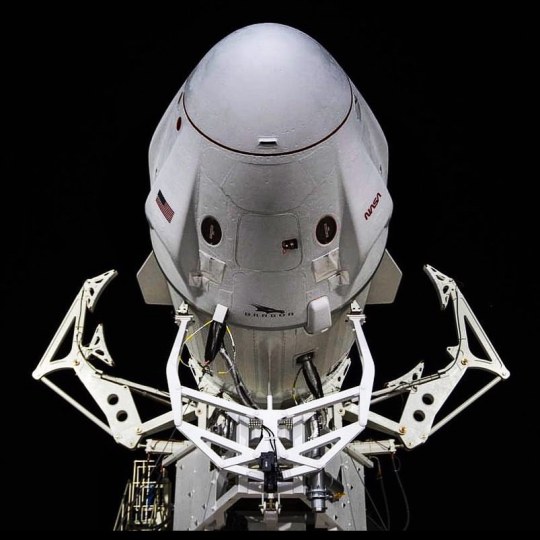
#SpaceX #Crew6 #launch POSTPONED due to ignition-fluid issue. Next launch opportunity is Tuesday (Feb. 28) at 1:22 a.m. EST #astronaut #spacexcrewdragon #spacexcrew6 #spacexdragon #crewdragon #spacecraft #rocketlaunch #spacexlaunch #spacexrocket #rocket #spacexnews (at Spacex Launch Complex 39A) https://www.instagram.com/p/CpKRdK8uAM0/?igshid=NGJjMDIxMWI=
#spacex#crew6#launch#astronaut#spacexcrewdragon#spacexcrew6#spacexdragon#crewdragon#spacecraft#rocketlaunch#spacexlaunch#spacexrocket#rocket#spacexnews
11 notes
·
View notes
Text


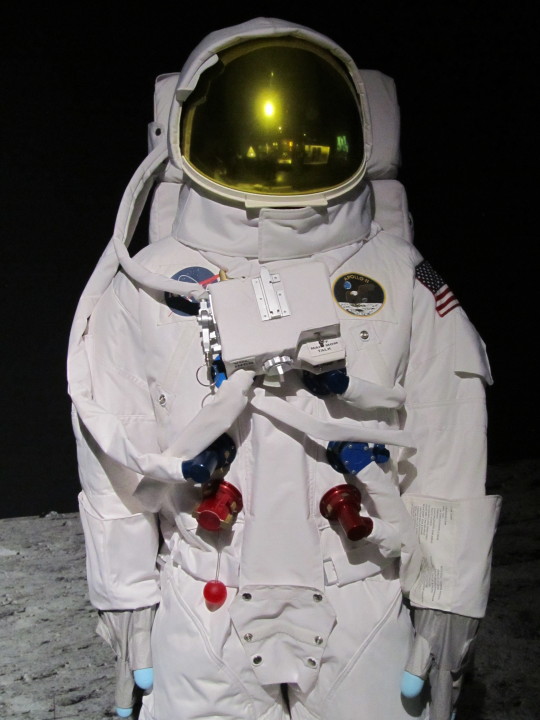
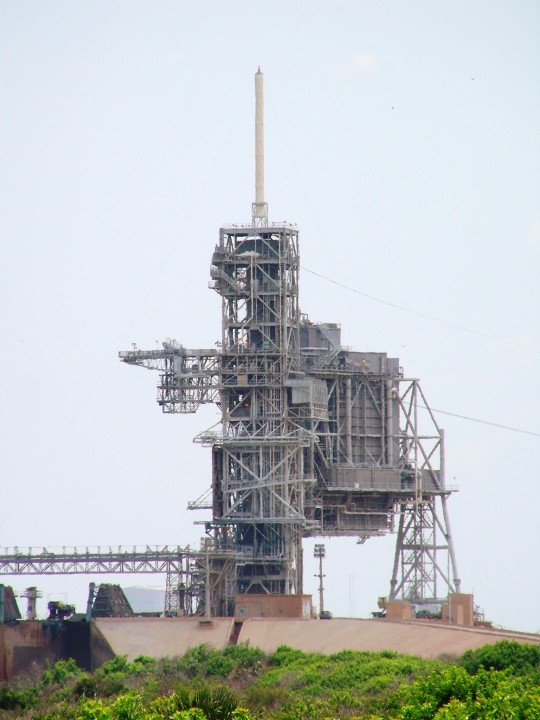
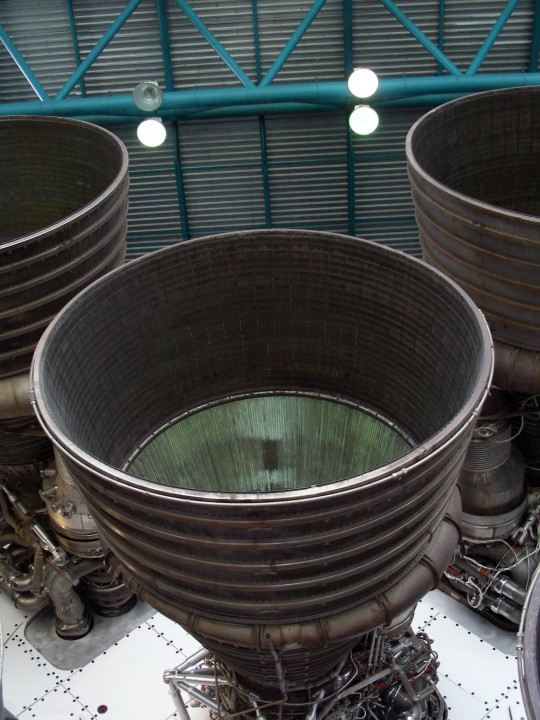

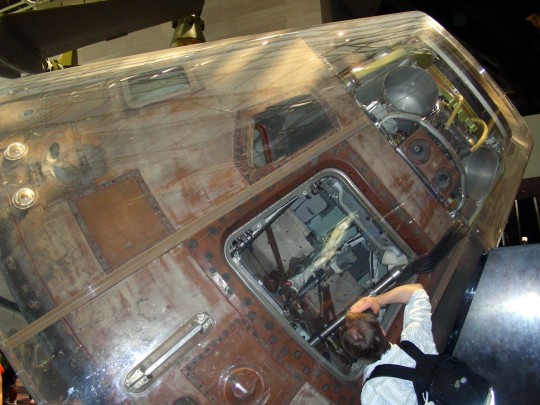
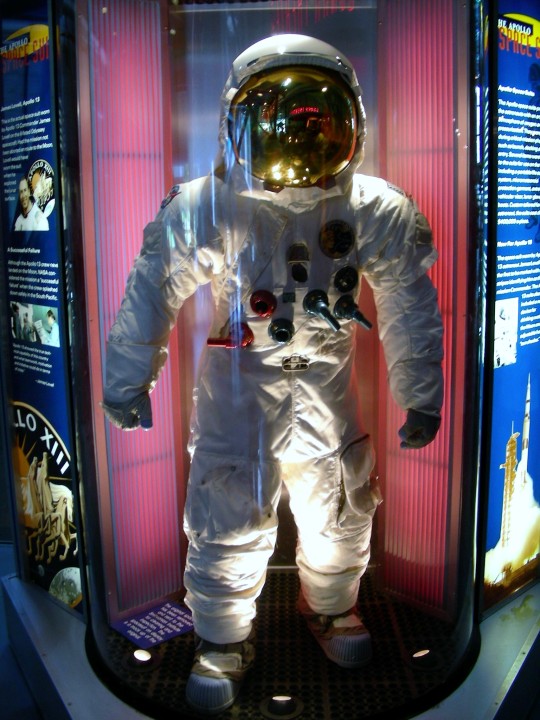


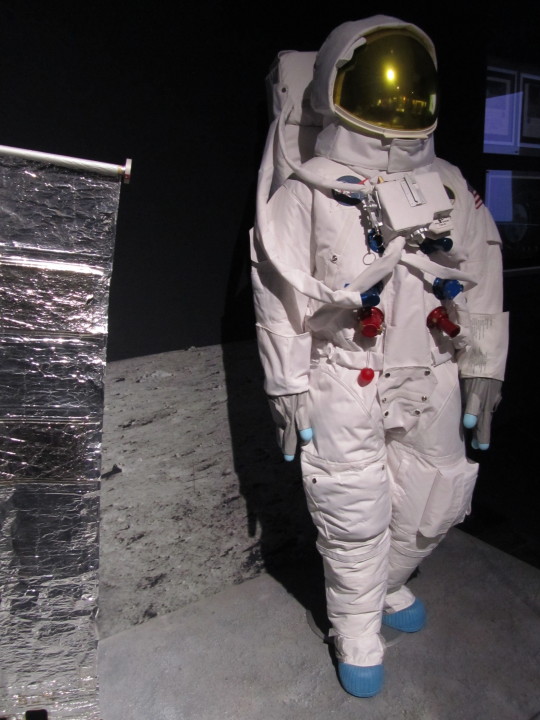

Apollo program: Apollo 11’s crew successfully makes the first manned landing on the Moon in the Sea of Tranquility. Americans Neil Armstrong and Buzz Aldrin became the first humans to walk on the Moon (July 21 UTC) on July 20, 1969.
#Swiss Museum of Transport#Verkehrshaus der Schweiz#Luzern#Lucerne#Switzerland#Florida#Kennedy Space Center#Apollo 11 Command Module 'Columbia'#National Aeronautics and Space Administration#NASA#National Air and Space Museum#Washington DC#Saturn V moon rocket#Launch Complex 39A (LC-39)#Apollo 11#landed#Moon#20 July 1969#anniversary#US history#technology#engineering#original photography#travel#vacation#tourist attraction#landmark#architecture#USA#Jim Lovell space suit
8 notes
·
View notes
